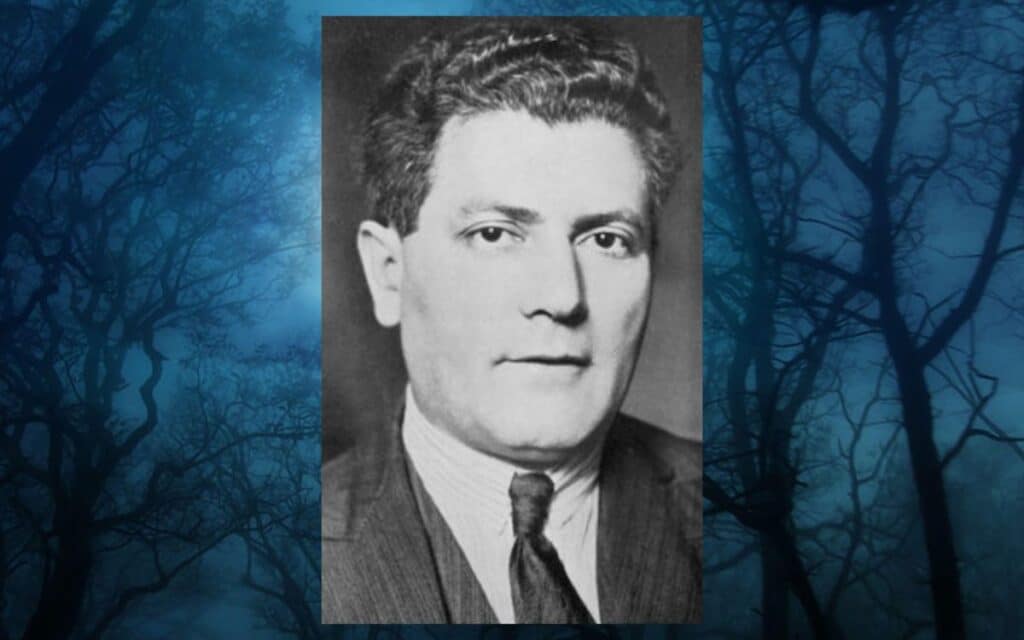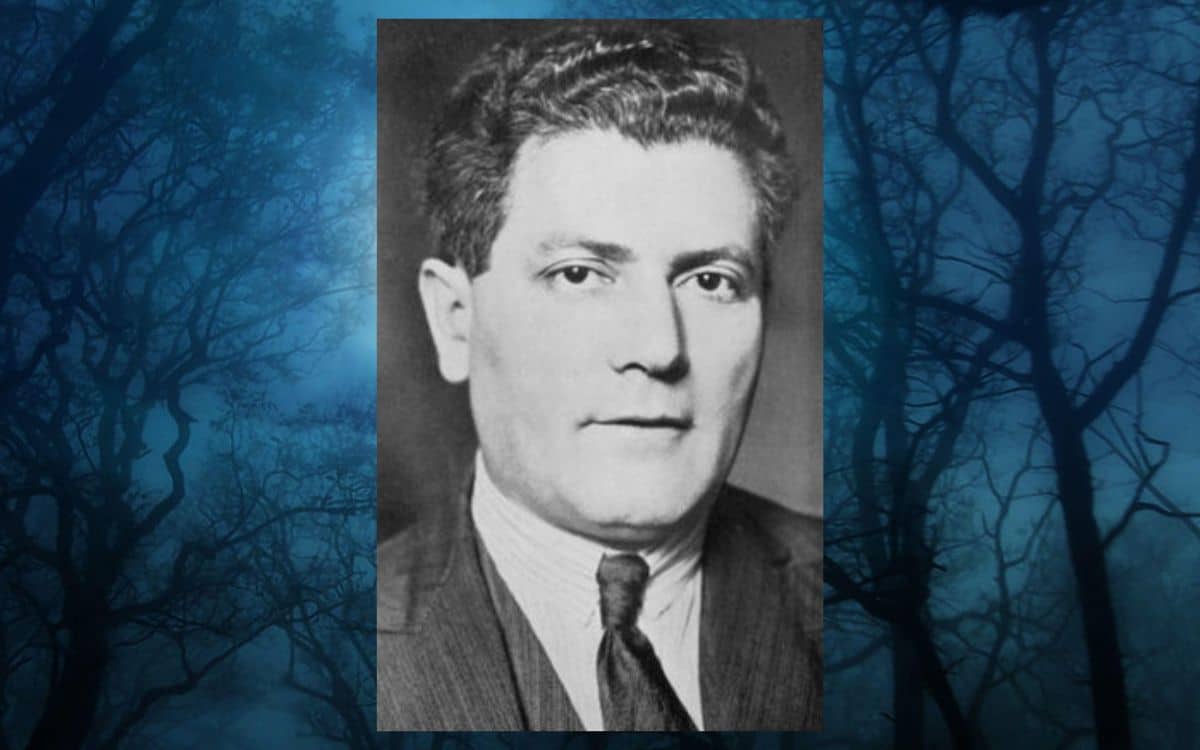Hungarian-born parapsychologist Nandor Fodor pioneered paranormal investigation in the UK. RICK HALE examines his ground-breaking theories and notable cases

Although organised psychical research began in the Victorian Era in Britain, it was the 20th century that gave rise to the professional paranormal investigator.
In those heydays, such names as Harry Price, Hereward Carrington and Peter Underwood dominated the English ghost hunting scene.
With their books and many publicized investigations they raised the field from being a mere curiosity made of academics to something the every man could engage in.
They made it cool way before paranormal reality TV was even a thing.
However, there is one name that is often not mentioned among ghost hunters active during this period. And that’s almost criminal in my humble opinion.
And that psychical researcher was none other than parapsychologist, Nandor Fodor. A researcher who was intimately involved in one of the most outrageous investigations in the annals of the paranormal.
Who was Nandor Fodor?
Nandor Fodor didn’t start his career in parapsychology or ghost hunting.
Born in Hungary, Fodor received his doctorate in law from the Royal Hungarian University of Science in Budapest.
Following his formal education, Nandor picked up his life and moved to New York City where he found work as a journalist.
After putting in his time on the beat, so to speak, he next tackled London in 1929 where he continued in journalism. But this time from behind a desk.
Nandor Fodor Finds His Passion
It was while working in London, Fodor indulged himself in his true passion, psychic phenomenon and paranormal investigation.
But it wasn’t just ghosts that piqued his curiosity, Nandor Fodor became the country’s leading authority on the paranormal’s most misunderstood phenomenon, poltergeists. As well as mediums.
In fact, Nandor Fodor was the first to offer the explanation that poltergeist activity was not caused by vengeful wraiths or angry ghosts.
Fodor suggested, poltergeists were the psychic manifestation of a person undergoing some kind of turmoil. Today, we call that Recurrent Spontaneous Psychokinesis or RSPK.
Of course, such a theory didn’t sit well with his colleagues, but Fodor came to this conclusion after working two of the most famous poltergeist cases on record. Both in Britain.
And one of those cases is about to make its silver screen premiere starring one of the funniest actors to ever entertain. Simon Pegg as Fodor in, Nandor Fodor And The Talking Mongoose.
Case 1: The Thornton Heath Haunting
Typically, poltergeist activity is attributed to a young person hitting that point in life we all dread but had to go though, adolescence and puberty.
But this isn’t always the case, and the activity surrounding a London housewife in Thornton Heath might just prove that.
The activity that centered around Alma Fielding began as war across Europe threatened to engulf not only the continent but the world.
The activity, as in a number of poltergeist cases began simply enough.
Household items seemed to take on a life of their own and moved about the house.
Books flew off shelves. But when a horrifically deformed, six fingered hand appeared, that’s when Alma took her story to the Press.
When the story of what Fielding and her family was enduring was printed in the Sunday Pictorial, Nandor Fodor answered the call to look further into the peculiar matter.
When Fodor arrived he wasted no time investigating Alma’s claims.
In order to get her into a more controlled environment, Fodor took her to The International Institute of Psychical Research. He believed her claims and wanted to be completely sure no trickery would be suspected.
While there, Alma, to the amazement of all who watched her, produced several apports out of thin air.
The investigators also did their best to trip up the London woman in the hopes it would betray her as a liar. At the end of the research, they were unable to do so.
So, if shenanigans weren’t involved, what caused the frightening activity? Well, Fodor had a theory for that.
Fodor suggested whenever the activity began, Alma appeared to be detached from reality.
She also displayed a great deal of distress over the impending war with Nazi Germany.
When Fodor filed his report the unexpected occurred, he was expelled from the Institute.
The Institute was deadset that Alma Fielding was a fraud and Nandor Fodor failed to see it.
The Thornton Heath haunting wasn’t the only controversial investigation Fodor would engage in. It was a talking mongoose that sealed his place in history.
Case 2: Gef The Talking Mongoose
In the autumn of 1931, James and Margaret Irving, along with their 13 year old daughter, Voirrey began experiencing something odd on their Isle of Man farm in Cashen’s Gap.
Voirrey, was the first to hear the scratching on the walls and the rustling of an unknown creature.
At first, the family dismissed it as nothing more than a rodent setting up a shelter to wait out the harsh winter. That is until the mysterious animal found its voice.
The animal, a mongoose, according to the Irvings, politely introduced itself as ‘Gef”.
Gef explained to the teen girl that he was born in India and was an, “Extra clever mongoose” and an “earthbound spirit.”
Odd as it may be, Gef proved to be a help around the house. He warned them of unwelcome guests and even chased away stray dogs and rats.
Strange, right? I know, but when people in the surrounding area heard of this extra clever mongoose in the local paper, they flocked to the farm in the hopes of seeing the extraordinary mammal.
Many claimed to hear his voice, as well catching a fleeting glimpse of the rodent. Gef was certainly becoming quite the sensation.
And this led to two of the most respected ghost hunters, Harry Price and Richard Lambert, visiting the farm.
After a thorough investigation, Price made an interesting discovery that led him to believe the story was a complete fabrication.
According to Harry Price, there was a great deal of space between the walls that made the house an acoustical nightmare.
If a person spoke between these spaces it would amplify their voices and carry them throughout the house.
At the end of the matter, Price concluded that only the most credulous person could buy into Gef the talking mongoose. Nandor Fodor on the other hand had a much different take on the situation.
When Fodor took over the investigation, he determined that a deliberate hoax was not being perpetrated on the Irving Farm. But rather a psychological one.
The eminent parapsychologist offered that James Irving was experiencing an inner turmoil that resulted in a “split off part” of himself
Basically James Irving was experiencing what we call, dissociative identity disorder. And Gef was his alter ego.
Now whether or not that’s true is up for debate. Nevertheless, the activity abated after two significant events.
One: James Irving died. And two, the farmer who bought the property after the Irving’s vacated claimed to shoot and kill the extra clever mongoose.
Many decades later after the bizarre events on the Cashen Gap farm, Voirrey, now an elderly woman adamantly stated that Gef was very real and not a fabrication.
New film about Nandor Fodor
Earlier this month, a film was released detailing Nandor Fodor’s involvement in the case of Gef. Nandor Fodor and the Talking Mongoose, starring Simon Pegg as the titular character hit the movie screens.
Of course, the story was changed somewhat to add comedic elements, however, I understand it has some accuracy.
But then again, that’s the case with anything that starts with “Based on true events”. I think I’ll wait for it to be released on streaming.



